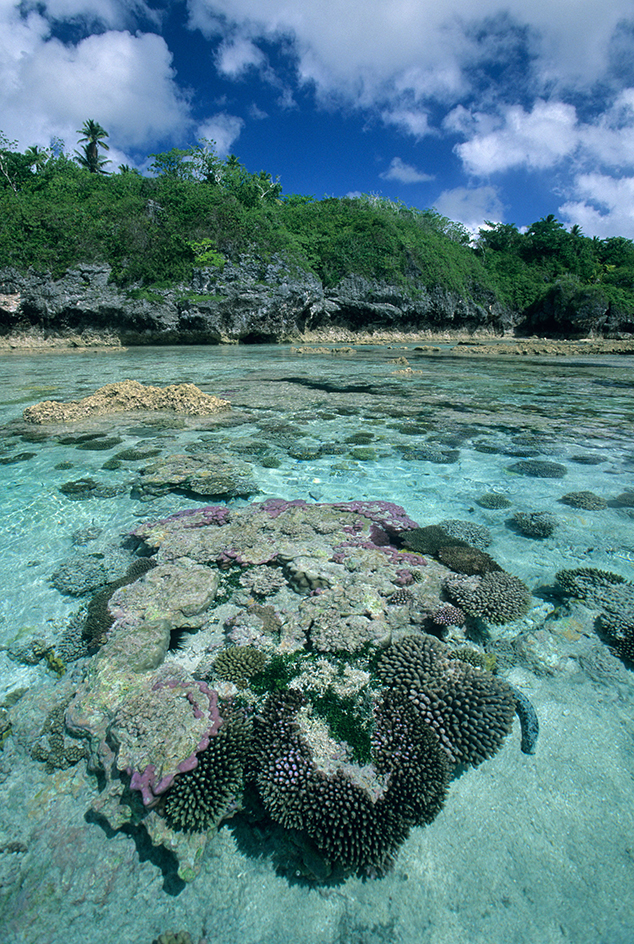Niue << nee oo ay >> is a self-governing island dependency of New Zealand in the South Pacific Ocean. It is about 300 miles (480 kilometers) northeast of Tonga and about 350 miles (560 kilometers) southeast of Samoa. Niue is 13 miles (21 kilometers) long and 11 miles (18 kilometers) wide. Niue is a raised coral atoll. Such an island is formed when a coral reef grows on an underwater volcano, which then rises above sea level.

Niue’s inhabitants are New Zealand citizens. The Niuean language is related to Tongan. The people also speak English. The Niuean people are noted for weaving fine baskets and mats from the leaves of pandanus trees. About one-fourth of the island is covered by a tropical rain forest. The main exports include copra, limes, and passion fruit. Farmers raise hogs and poultry.
Niue has a Legislative Assembly of 20 members. It also has a cabinet made up of a premier and three ministers.
Many scholars believe that Polynesian people have lived on Niue for more than a thousand years. The Niuean language shows that some settlers came from Tonga and others from the Samoa Islands and eastern Polynesia.
The first European explorer to reach the island was James Cook. He arrived on June 20, 1774. The islanders gave Cook and his crew a hostile reception, and he named the island Savage Island. A British protectorate over Niue was declared in 1900, and the following year, the island was annexed to New Zealand as part of the Cook Islands. The island was placed under separate administration in 1904. Niue was granted self-government by the New Zealand government in 1974, with New Zealand continuing to be responsible for defense and foreign affairs and for providing economic aid.
In 2004, Cyclone Heta severely damaged Niue’s capital, Alofi, as well as the island’s crops.
